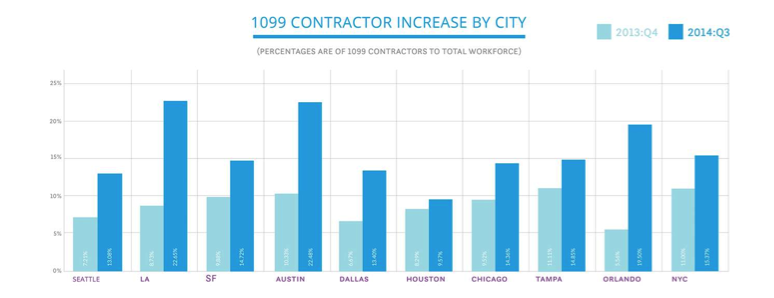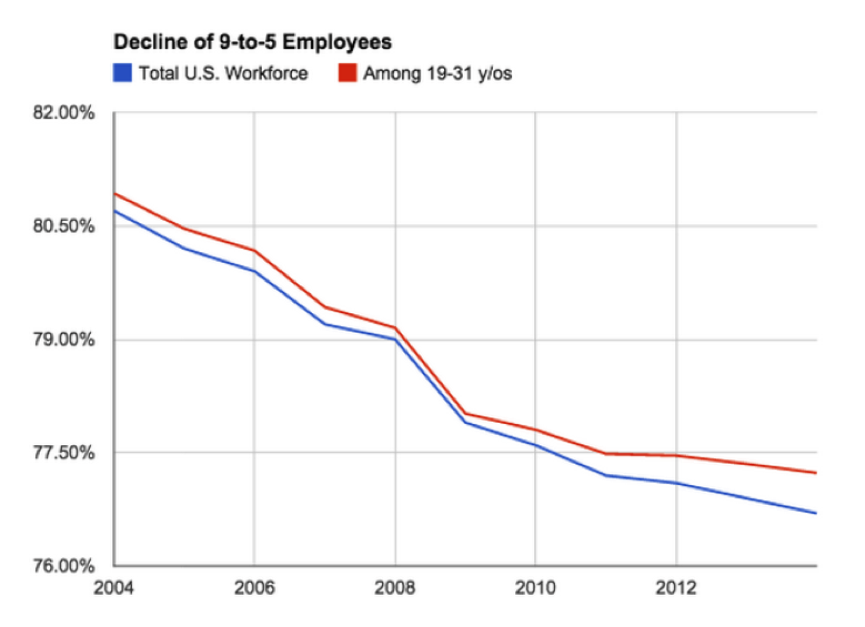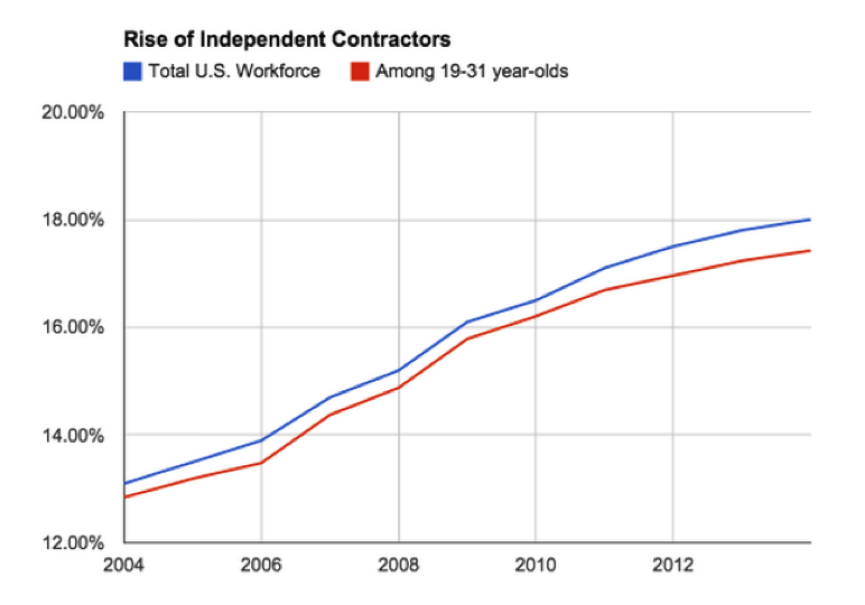By John Mauldin
There is growing awareness of what is being called the “gig economy.”
It’s not just Uber driving or Airbnb. There are literally scores of websites and apps where you can advertise your services, get temporary or part-time work, and do so from anywhere you happen to be.
Some “gigs” actually pay pretty good money, but they are for people with specialized skills who prefer to live a somewhat different lifestyle than the typical 9-to-5’er does.
My hedge fund friend Murat Köprülü has been busy researching and documenting this phenomenon and regularly regales me with what he finds.
He goes and spends evenings and weekends with young gig workers, trying to figure out what it is they really do and how they make ends meet in New York City.
It turns out they need a lot less to support their lifestyle than you might imagine, and they prefer working intermittent gigs, being able to do what they want, and having no boss.
Free Reports:
 Get Our Free Metatrader 4 Indicators - Put Our Free MetaTrader 4 Custom Indicators on your charts when you join our Weekly Newsletter
Get Our Free Metatrader 4 Indicators - Put Our Free MetaTrader 4 Custom Indicators on your charts when you join our Weekly Newsletter
 Get our Weekly Commitment of Traders Reports - See where the biggest traders (Hedge Funds and Commercial Hedgers) are positioned in the futures markets on a weekly basis.
Get our Weekly Commitment of Traders Reports - See where the biggest traders (Hedge Funds and Commercial Hedgers) are positioned in the futures markets on a weekly basis.
A close look at the data indicates that the gig economy is indeed big and growing. But there is a great deal of debate among economists about how big it really is.
It’s Much Bigger Than the Employment Data Suggests
Gig workers don’t seem to show up clearly in the BLS employment data.
Typically, we would expect those working in the gig economy to appear in the self-employed category, but that category is actually drifting downward in numbers—relatively speaking.
But Harvard economist Larry Katz and Princeton’s Alan Krueger, who are working on research to document the rise of the gig economy in America, says that our current measures ignore the bulk of the gig economy.
From a story at fusion.net:
Katz said two pieces of evidence suggest current measures of self-employment and multiple-job holding are “missing a large part of the gig economy.”
The first is that the share of the employed (and of the adult population) filing a 1099 form, the tax document “gig economy” workers must file, increased in the 2000s, even as standard measures of self-employment declined in the 2000s.
Other groups have confirmed this: Zen Payroll, a site that tracks the sharing economy, found increases in the share of 1099 workers across many major U.S. metros.

Source: Zen Payroll via Small Business Labs
And data from research group EconomicModeling.com show the share of traditional, 9-to-5 workers in the labor force has declined…

Source: Fusion, data via EconomicModeling.com
… while those who categorize themselves as “miscellaneous proprietors” is climbing.

Source: Fusion, data via EconomicModeling.com
A recent survey found 60 percent of such workers get at least 25 percent of their income from gig economy work.
The problem with the BLS estimates is that they overlook a sizable chunk of the true gig economy.
And this report absolutely squares with what my friend Murat’s research is showing: that gig economy is not shrinking. On the contrary, it’s on the rise, and a quite rapid rise.
Subscribe to Thoughts from the Frontline
Follow Mauldin as he uncovers the truth behind, and beyond, the financial headlines in his free publication, Thoughts from the Frontline. The publication explores developments overlooked by mainstream news to help you understand what’s happening in the economy and navigate the markets with confidence.
The article was excerpted from John F. Mauldin’s Thoughts from the Frontline.
Copyright 2015. Follow John Mauldin on Twitter.